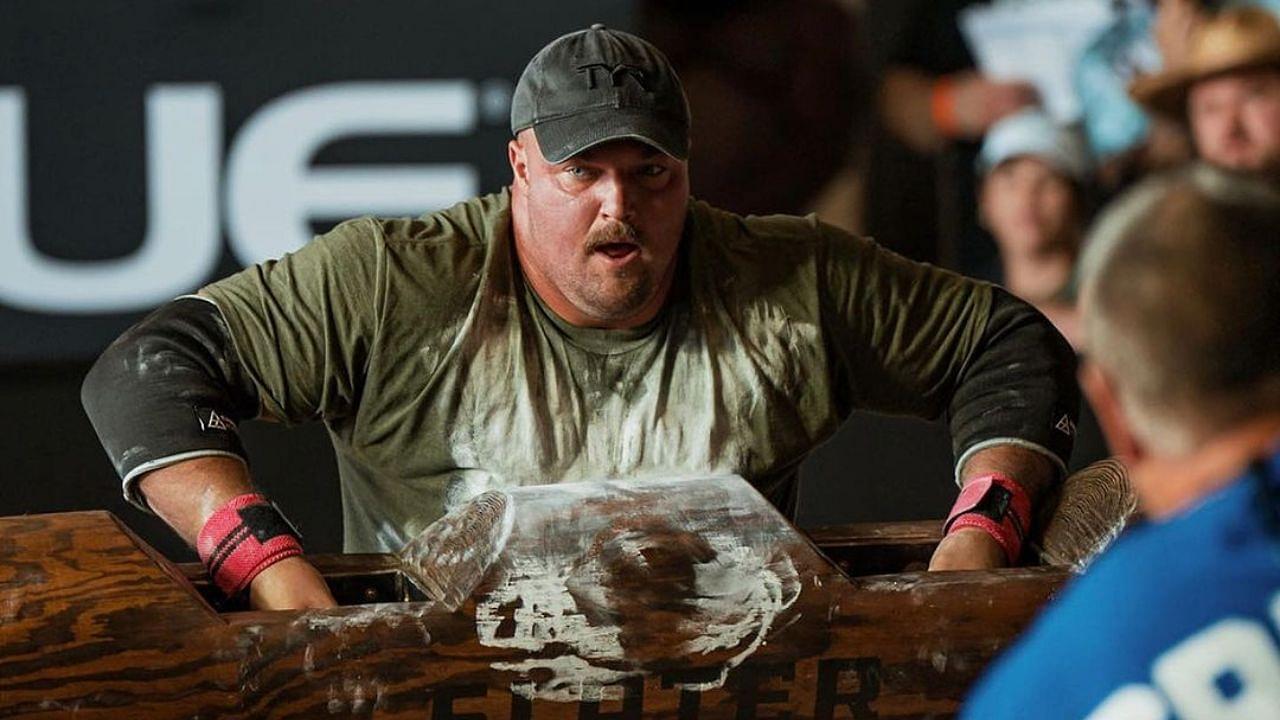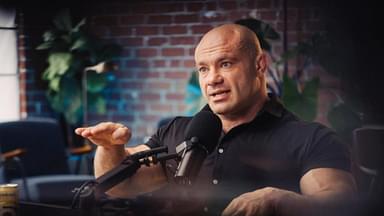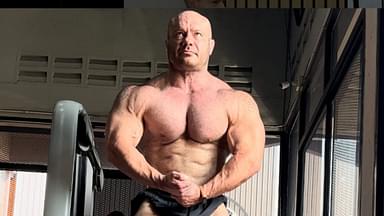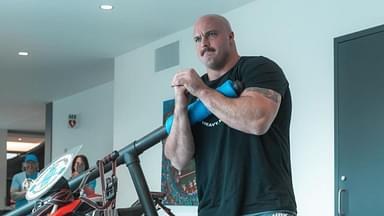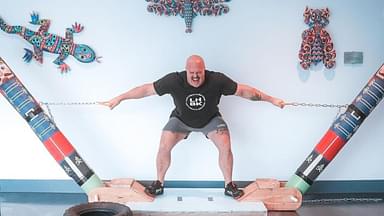Mitchell Hooper has been reigning supreme in the Strongman universe, with several podium finishes to his name, including the recent Arnold Strongman Classics. Since his victory, he has been focusing on pushing out content that documented his prep work and expert advice to get him to the top of his game. In one such episode of the series ‘No Stone Unturned’, he consulted exercise scientist Dr. Mike Israetel to understand the protocols for training for size.
But before they could get to the subject of getting jacked, Hooper was curious about the mechanism of muscle growth and how hypertrophy occurred. Broadly dividing the scenario into the ‘heavier weights fewer reps’ approach versus the ‘lighter weights more reps’ approach, he asked Dr. Israetel for confirmation.
The sports scientist agreed but noted that there was no direct evidence of how much metabolic stress, or exercise, could generate muscle growth with the help of metabolite generation. This meant that while exercising produced metabolites like lactate and phosphatidic acid, one still needed to prove that muscle growth occurred due to their collection in the muscles.
On the other hand, the two methods that Hooper described worked in their ways to increase size. One could send forth a strong message to the muscles with heavier and more intense weights, inducing growth. Or, they could send softer but consistent messages to the muscles through multiple reps with light weights.
“Maybe it’s still mechanical tension that’s responsible for some or most of the growth…but that metabolite stuff makes up the difference and brings them roughly equal.”
To train for size, Dr. Israetel recommends a three-way approach:
- Challenging the body with heavy resistance
- Hard training with sets to failure
- Nutrition
Unlike popular belief, the sports scientist revealed that for building muscle, instead of a heavy-duty approach that an icon like Mike Mentzer would opt for, a wider rep range was more handy.
“In hypertrophy training, technically speaking, anything between doing one rep that’s tough…all the way up to doing even sets of like fifty reps close to failure works pretty well.”
All of these tips gave Hooper a better look into not just training for strength like other strongmen, but also training for some musculature. Hooper’s transformation through his career as an athlete has been jaw-dropping, with wild fluctuations in weight and looks.
Life before strongman: How Mitchell Hooper described his transformation
Looking at the Canadian ‘Moose’ and his strength across various competitions, it’s hard to believe that he once participated in several other sports and did not have the muscle mass that fans now know him for. He once talked about his experience after graduation in a YouTube video.
He began his journey as a strength and conditioning coach for athletes, decided that he wanted to relate more to the masses, and entered posing shows. In a drastic transformation, he even attempted aerobic exercises, ran marathons, and weighed about 200 lbs. When he finally got around to strongman and found his true calling, he slowly grew his size and mass, while focusing on strength and healing, courtesy of his kinesiology background. Hooper has to be one of the most poignant athletes in the strength sports field, and his growing number of trophies is a testament to his prowess.
